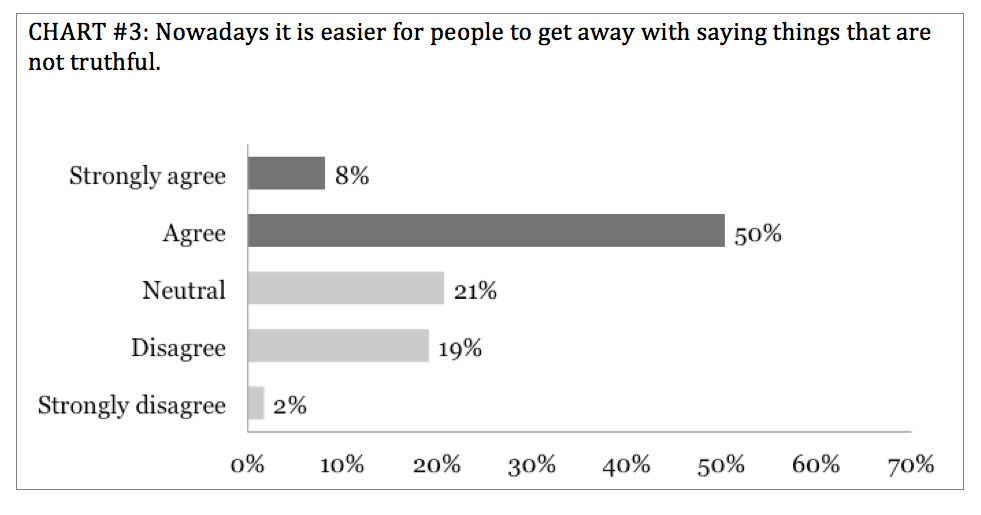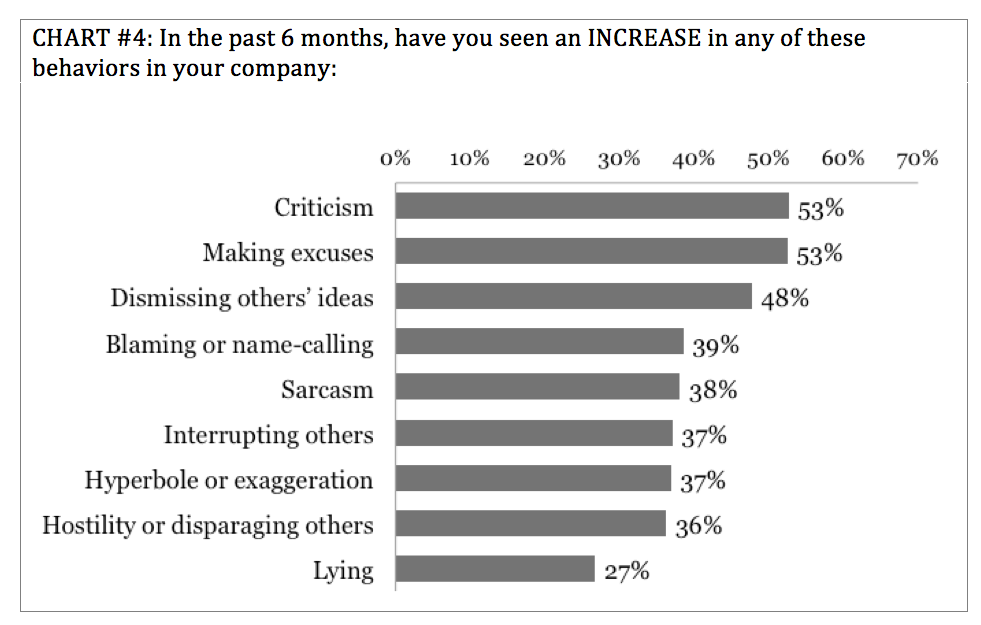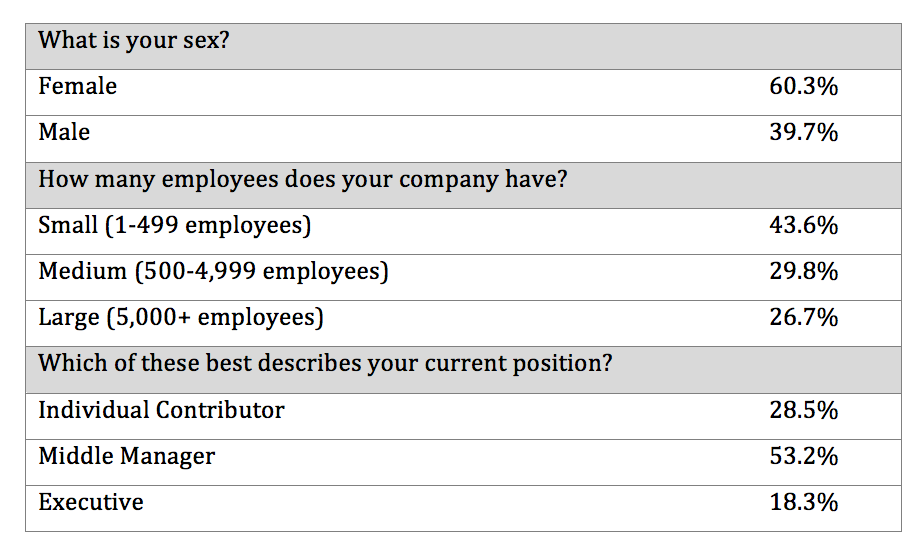STUDY: Fake News Hits The Workplace

Fake News Study Overview
The terms ‘fake news’ and ‘alternative facts’ entered the lexicon during the 2016 presidential election. And now the impact of these terms are being felt in the American workplace.
During May-June 2017, Leadership IQ surveyed 3,272 leaders and professionals from the United States and discovered the following:
- Nine out of ten people have heard the term ‘fake news’ and eight out of ten have heard of ‘alternative facts.’
- 59% are concerned about ‘fake news’ in the workplace (with 24% rising to the level of ‘very concerned’). And 64% are concerned about ‘alternative facts’ in the workplace (with 27% rising to the level of ‘very concerned’).
- 58% believe that nowadays it is easier for people to get away with saying things that are not truthful.
- In the past 6 months, leaders and professionals have seen an increase in these problem behaviors:
- 53% have seen an increase in Criticism
- 53% have seen an increase in Making excuses
- 48% have seen an increase in Dismissing others’ ideas
- 39% have seen an increase in Blaming or name-calling
- 38% have seen an increase in Sarcasm
- 37% have seen an increase in Interrupting others
- 37% have seen an increase in Hyperbole or exaggeration
- 36% have seen an increase in Hostility or disparaging others
- 27% have seen an increase in Lying
Below are the detailed findings from the study...
Finding #1: Most people have heard of ‘fake news’ and ‘alternative facts.’
89% of people have heard the term ‘fake news’ and 85% have heard of ‘alternative facts.’
Men are significantly more likely to have heard the term ‘fake news’ than women (94% vs. 86%). And executives are significantly more likely to have heard the term than either middle managers (89%) or individual contributors (86%).
People in small and medium size companies are more likely to have heard of ‘fake news’ than those in large companies, although the differences are small and not particularly significant.

Finding #2: There’s a great deal of concern about ‘fake news’ and ‘alternative facts’ in the workplace.
59% are concerned about ‘fake news’ in the workplace (with 24% rising to the level of ‘very concerned’). And 64% are concerned about ‘alternative facts’ in the workplace (with 27% rising to the level of ‘very concerned’).
Men are significantly more concerned about fake news in the workplace than women (63% vs. 54% for the percent of people that are very or somewhat concerned). And people in small and medium companies are significantly more concerned (60%) than those in large companies (51%).
Individual contributors are significantly more concerned (65%) than either middle managers (55%) or executives (53%).

Finding #3: It’s now easier to get away with not being truthful.
58% ‘strongly agree’ or ‘agree’ that nowadays it is easier for people to get away with saying things that are not truthful.
While men were more aware of, and concerned about, fake news, women are more likely to believe that it’s currently easier for people to get away with saying things that are not truthful (60% for women vs. 57% for men).
Those in small companies are significantly more likely to believe that nowadays it is easier for people to get away with saying things that are not truthful (62%) compared with medium (57%) or large (55%) companies.
Individual contributors are significantly more likely to believe that nowadays it is easier for people to get away with saying things that are not truthful (67%) than either middle managers (55%) or executives (57%).

Finding #4: In the past 6 months there’s been an increase in problem behaviors like lying, blaming, and exaggerating.
Respondents were given a list of problem behaviors often associated with fake news, alternative facts, incivility, etc., and were asked to choose any of those for which they’ve seen an increase in the past 6 months.
In the past 6 months, survey respondents have seen an increase in these problem behaviors:
- 53% have seen an increase in Criticism
- 53% have seen an increase in Making excuses
- 48% have seen an increase in Dismissing others’ ideas
- 39% have seen an increase in Blaming or name-calling
- 38% have seen an increase in Sarcasm
- 37% have seen an increase in Interrupting others
- 37% have seen an increase in Hyperbole or exaggeration
- 36% have seen an increase in Hostility or disparaging others
- 27% have seen an increase in Lying

Survey Methodology
During May-June 2017, Leadership IQ surveyed 3,272 leaders and professionals from the United States. The survey consisted of 14 questions and was fielded electronically. The average survey participant took 7 minutes to complete the assessment.
The following chart shows the various demographic breakdowns of the 3,272 participants in the study.








